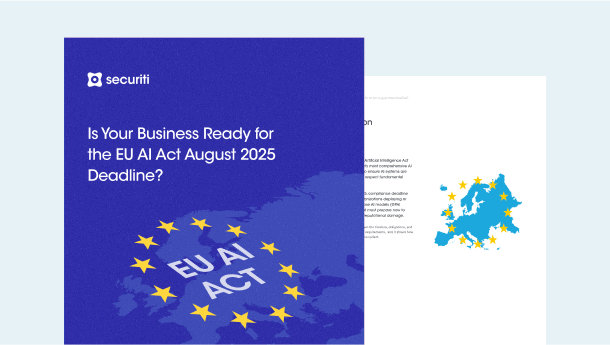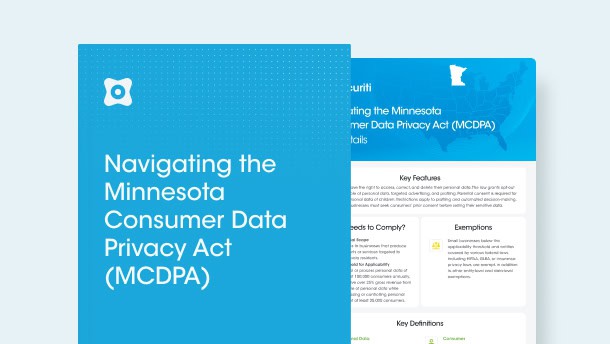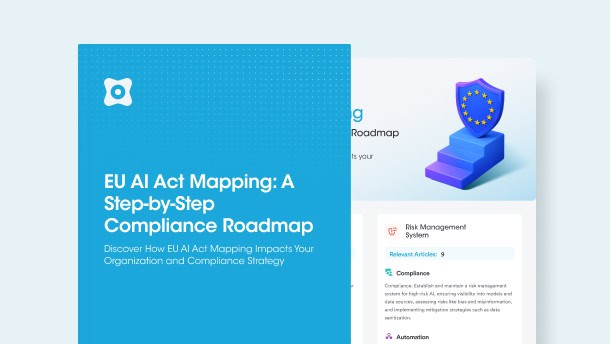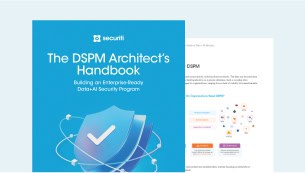Benefits of PCI DSS Compliance
PCI DSS compliance significantly benefits organizations that process credit card transactions. These include:
Enhanced Security
Organizations can implement strong security measures designed to reduce vulnerabilities to safeguard sensitive payment card data, reducing data breaches, fraud, and other security risks.
Reduced Financial Liability
In the event of a data breach, non-compliance with PCI DSS may result in fines and penalties. Businesses can prevent these financial implications by achieving compliance.
Ensure Legal Compliance
PCI DSS compliance may be required by law in certain regions. Being PCI DSS compliant ensures that the company is in good legal standing, preventing unforeseen legal complexities.
Streamlined Operations
Optimizing data security practices is frequently necessary to ensure PCI DSS compliance, ultimately resulting in more cost-effective and effective operations.
Access to Payment Card Networks
Major card networks like Visa and MasterCard require PCI DSS compliance to process payments, enabling companies to process payments swiftly without interruptions.
Improved Reputation & Customer Trust
PCI DSS compliance demonstrates a commitment to security, which protects and enhances an organization’s reputation and improves customer trust.
Competitive Advantage
Compliance with PCI DSS gives your company a competitive edge over competitors who might not be compliant.
PCI DSS Compliance Certification Standards
PCI DSS certification means complying with several specific requirements and standards designed to ensure the secure handling of payment card data. The current version of the PCI DSS is PCI DSS v4.0. Here are the key PCI certification practices needed to ensure compliance with the evolving standard:
Build and Maintain a Secure Network and Systems
1. Install and Maintain Network Security Controls
Install and maintain network security controls by employing strong firewalls, intrusion detection systems, and encryption methods to prevent data breaches and cyberattacks.
2. Apply Secure Configurations to All System Components
Apply secure configurations to all system components by changing default passwords, eliminating unnecessary software, functionalities, and accounts, and deactivating or uninstalling unnecessary services to reduce the possibility of compromising the system.
Protect Account Data
3. Protect Stored Account Data
Protect stored account data using encryption, truncation, masking, and hashing. Employ risk-reduction strategies such as avoiding holding account information unless absolutely essential, truncating cardholder data when the entire PAN is not required, and refraining from providing unprotected PANs via end-user messaging platforms like email and instant messaging.
4. Protect Cardholder Data with Strong Cryptography During Transmission Over Open, Public Networks
Protect cardholder data using strong cryptography keys during transmission over open and public networks. This increases the likelihood of data secrecy, integrity, and non-repudiation. Any transmissions of cardholder data through a network that stores, processes, or transmits cardholder data are immediately subject to PCI DSS. Such networks must be evaluated and assessed to comply with the applicable PCI DSS regulations.
Maintain a Vulnerability Management Program
5. Protect All Systems and Networks from Malicious Software
To protect all systems and networks from malicious software, malicious software or firmware must be identified and eliminated. Examples of malicious software include viruses, worms, Trojans, spyware, ransomware, keyloggers, rootkits, malicious code, scripts, and links.
6. Develop and Maintain Secure Systems and Software
Develop and maintain secure systems and software to prevent security vulnerabilities that can be exploited to gain privileged access to systems. Organizations must routinely update their software components via the necessary software patches to ensure no software intrusion.
Implement Strong Access Control Measures
7. Restrict Access to System Components and Cardholder Data by Business Need to Know
Restrict access to system components and cardholder data by business need-to-know to ensure that only authorized individuals gain access to data. These requirements apply to user accounts and access for employees, contractors, consultants, internal and external vendors, and other third parties.
8. Identify Users and Authenticate Access to System Components
Two fundamental principles of identifying and authenticating users are to establish the identity of an individual or process on a computer system and prove or verify the user associated with the identity is who the user claims to be.
The element used to prove or verify the identity is known as the authentication factor. Authentication factors include something you know, such as a password or passphrase; something you have, such as a token device or smart card; or something you are, such as a biometric element.
9. Restrict Physical Access to Cardholder Data
Restrict physical access to systems that store, process, or transmit cardholder data since it enables individuals to access and/or remove systems or hardcopies containing cardholder data.
Regularly Monitor and Test Networks
10. Log and Monitor All Access to System Components and Cardholder Data
Log and monitor all access to system components and cardholder data to prevent, identify, or mitigate the effects of a data compromise. Logs are present on every system component and in the Cardholder Data Environment (CDE), enabling full monitoring, notification, and analysis if something goes wrong. Without system activity logs, it is difficult, if not impossible, to identify the cause of a compromise.
11. Test the Security of Systems and Networks Regularly
To ensure that security policies continue to take into account the ever-evolving environment, system components, processes, and customized and custom software should all undergo regular testing.
Maintain an Information Security Policy
The overall information security policy of the organization establishes the tone for the entire organization and specifies what is expected of the employees. Every employee should understand the sensitivity of cardholder data and the need for protection.
PCI DSS Compliance Levels
PCI DSS compliance levels determine the specific validation and reporting requirements that organizations must follow to demonstrate their adherence to PCI DSS. The volume of credit card transactions a business processes annually determines the compliance level. Each of the participating payment card brands - American Express, Discover, JCB International, Mastercard, Union Pay, and Visa - have their own compliance levels. For example, the following are the compliance level of:
Level 1
- Organizations that process over 6 million transactions annually.
- Annual on-site assessment by a Qualified Security Assessor (QSA).
- Quarterly network scans by an Approved Scanning Vendor (ASV).
- Complete PCI DSS Self-Assessment Questionnaire (SAQ).
Level 2
- Organizations that process between 1 million and 6 million transactions annually.
- Annual on-site assessment by a QSA.
- Quarterly network scans by an ASV.
- Complete PCI DSS SAQ.
Level 3
- Organizations that process between 20,000 and 1 million transactions annually.
- Annual PCI DSS self-assessment questionnaire.
- Quarterly network scans by an ASV.
Level 4
- Organizations that process less than 20,000 transactions and all other merchants processing up to 1 million Visa transactions annually.
- Annual PCI DSS self-assessment questionnaire.
- Quarterly network scans by an ASV.
PCI-DSS Compliance Best Practices
Achieving and maintaining PCI DSS (Payment Card Industry Data Security Standard) compliance is essential for any organization that processes payment card transactions. Here are some best practices to help you achieve and maintain PCI DSS compliance effectively:
Identify In-Scope Systems
To determine which systems and procedures are subject to PCI DSS requirements, precisely define the scope of your cardholder data environment (CDE). This will enable you to concentrate your compliance efforts more effectively.
Regularly Update Your Security Policies
Establish and implement comprehensive security policies and practices that comply with PCI DSS regulations. Ensure that personnel are aware and trained on these policies.
Implement Strong Access Controls
Apply stringent access controls such as strong, unique passwords or passphrases, and consider multi-factor authentication to restrict access to cardholder data using the least privileges approach.
Encrypt Sensitive Data
Use strong encryption processes to protect cardholder data while it is in storage and during transmission. Implement robust encryption practices for all systems that deal with credit card data.
Regularly Update and Patch Systems
Ensure that systems are updated with the most recent security patches and upgrades on all systems, programs, and apps. Attackers often exploit vulnerabilities in outdated systems.
Secure Network Segmentation
Segregate your network to separate the cardholder data environment from other systems. Limit connections to the cardholder data environment by using firewalls and access controls.
Implement Intrusion Detection and Prevention Systems (IDS/IPS)
Leverage Intrusion detection systems (IDS) and intrusion prevention systems (IPS) tools to monitor network traffic, identify potential threats in real-time, and take immediate action.
Regularly Monitor and Audit Systems
Implement a robust log management and monitoring system to track and analyze security events and conduct routine security audits to identify vulnerabilities.
Maintain an Incident Response Plan
Develop and maintain a comprehensive documented incident response plan that effectively outlines how to respond to security incidents, breaches, and data compromises.
Train and Educate Personnel
Employees must receive regular security awareness training, explicitly outlining each employee's role in maintaining PCI DSS compliance.
Engage Qualified Security Assessors (QSAs)
Engage with qualified security assessors to obtain the latest guidance on your practices and conduct security and risk assessments to validate your compliance.
Use Approved Scanning Vendors (ASVs)
As PCI DSS requires, engage with ASVs to conduct vulnerability scans and penetration tests.
Document and test all system changes that could affect cardholder data security. Maintain a formal change control process.
Segmentation and Tokenization
Reduce the scope of the cardholder data environment and safeguard sensitive data by implementing data segmentation and tokenization.
Regularly Review and Update Your Compliance
Keep up with changes to PCI DSS regulations so that your compliance activities align with the most recent standards.
Documentation and Record-Keeping
Maintain thorough records of all compliance activities, assessments, and security-related documentation.
Regularly Monitor Service Providers
If you work with third-party service providers, ensure they are also PCI DSS compliant and frequently monitor their compliance.
How Securiti Can Help?
Securiti Data Command Center, a centralized platform that enables the safe use of data and GenAI, provides unified data intelligence, controls, and orchestration across hybrid multicloud environments.
Securiti can help businesses improve compliance with PCI DSS and the latest standard PCI DSS v4.0 in several ways:
Identify Cardholder Data
Securiti can scan SaaS platforms and cloud silos for cardholder data. This can help businesses to identify cardholder data that is stored in in-scope systems and out-of-scope systems.
Classify Cardholder Data
Securiti can classify cardholder data based on its sensitivity. This can help businesses to prioritize their security efforts and protect the most sensitive cardholder data.
Protect Cardholder Data
Securiti can help businesses to protect cardholder data from unauthorized access, use, disclosure, disruption, modification, or destruction. This includes encrypting cardholder data at rest and in transit.
Track and Monitor Authentication and Security Control Standards
Securiti can identify what systems have multi-factor authentication (MFA). It also helps businesses to implement more robust security by offering Data Security Posture management and Access Intelligence.
Request a demo now to learn how Securiti can ensure compliance with PCI DSS.








































